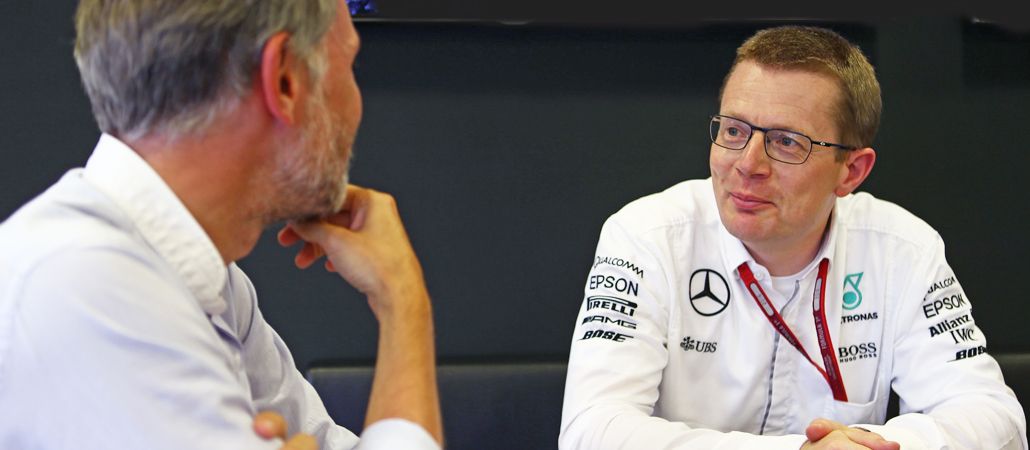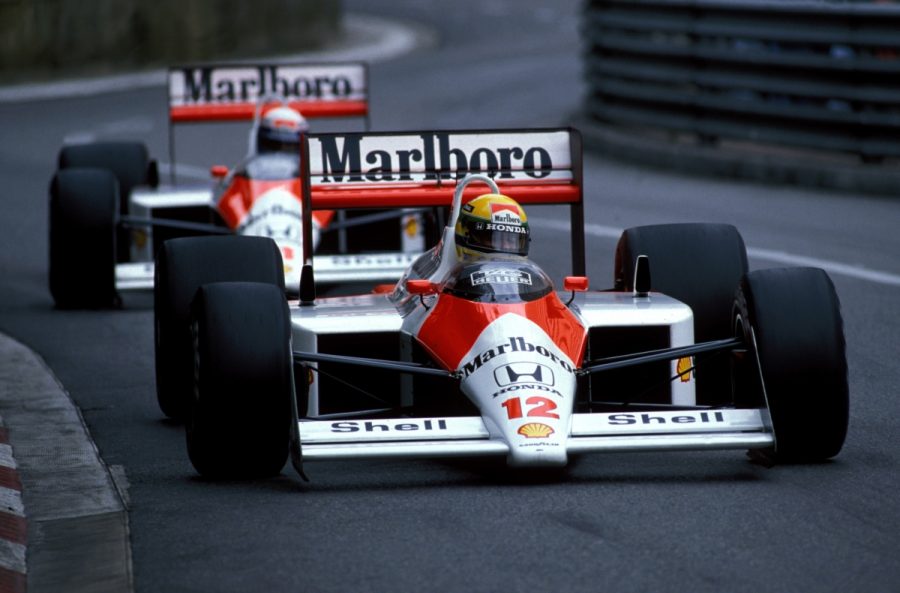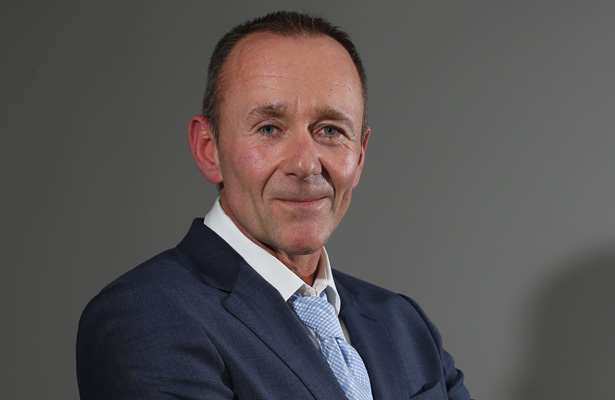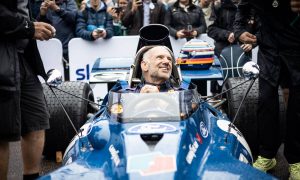AN ADVOCATE FOR ENGINE/CHASSIS INTEGRATION
If the engine took centre stage during Formula 1’s previous rules revamp in 2014, this year’s overhaul has put the emphasis on tyres and aerodynamics with aggressive-looking cars set to be unveiled in just a few weeks’ time.
As radical as the bodywork changes might be, that does not mean the 1.6-litre V6 turbocharged power units will be reduced to playing second fiddle. Quite the opposite actually, as more power will be needed to propel cars generating 20% more downforce but also increasing drag due to bigger tyres.
Winning in 2017 will still require having a potent engine and an efficient chassis, or more exactly, a good engine well packaged into a good chassis. Andy Cowell, the managing director of Mercedes’ High Performance Powertrains department, has always been an advocate for seamless integration. Back in 1998, when he was at Cosworth, Cowell worked on the cylinder head of the CK engine that powered the Stewart Grand Prix team and later Jaguar Racing.
“That cylinder head is a very good example [of integration],” Cowell told F1i. “We changed the style of the valve train within the cylinder head, and it was clear that making such a big change inside the cylinder head presented an opportunity for the car as well as the engine.
“I think that’s where it’s important that the technical leader of the engine powertrain side needs to work very closely with the technical leader of the chassis side. That cylinder head concept came about from a chat: ‘Let’s look at the load paths that the car needs, what is it that the car needs from the structure of the engine, and then what is it that the valve train needs from the structure of the cylinder head.’
“And that was designed over Christmas! I had a drawing board in one of the spare bedrooms at home. In that period between Christmas and New Year where you take a rolled-up collection of drawings and put it on there, and in between visitors and films, and food and so on, you just start moving things around and drawing, and we came with some ideas and then a group of engineers turn them into reality.
“It was the same with the new V6, with the ERS system. The racing car architecture had not changed for a long time. So you know very well what the key load paths are, you know very well the areas that the aerodynamicists don’t want you to encroach into, and then you just want to make it small and light but super-efficient. Everything’s got to be through efficiency and minimum volume and minimum mass.
“And then again, the turbocharger concept was one of those journeys where the guys looking after the turbocharger came up with all the possible options how it should be laid out. The route that we decided to take is clearly the best one for the racing car but the hardest one to make work.”
RISING TO THE CHALLENGE
Mercedes’ engine dominance has been mainly attributed to the split-turbo layout of its power unit, with the compressor placed at the front of the unit while the turbine sits at the rear. The innovative design calls for a very long shaft though, which was quite a tricky installation to implement for the engineers at Brixworth.
“There’s an FIA regulation that says you can’t come outside [certain] planes,” Cowell added. “The regulations stipulate the volume as well so that these two planes where the engine mounts are defined and then there’s a box defined at the front. It finishes there and it goes up to the sky which is for the oil tanks.
“The placement of number one piston is going to be as far forward as we possibly can, the compressor is going in there, but the oil tank is staying there because the box is thought of for the oil tank and so, you know what? We’ll stick the compressor right in the middle of the oil tank.
“This makes it hard for the oil tank man, the compressor man and the crank case man, but when they are all working together and they’re all chasing tenths of millimetres and we’re having regular meetings where we go ‘Right, so what’s touching now? What’s going there? How do we balance that out?’ and at the back you’re saying ‘That turbine must go in there, we’re not going to interfere with the clutch and the gearbox, we’re keeping it all tucked in together’, so lots of size challenges, real estate challenges almost, as you’re trying to fit it in.
“What we worked on was ‘Let’s not interfere with the car, how can we make this new power unit drop in to the existing car architecture as best as possible?’ And that’s where burying the turbo in and being very aggressive with the packaging of the ERS system I think has helped us.”

 '
'







